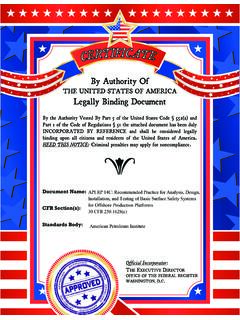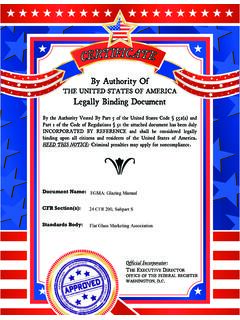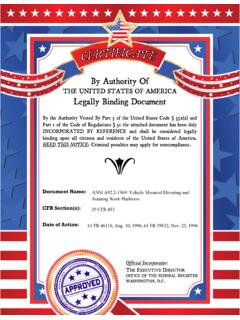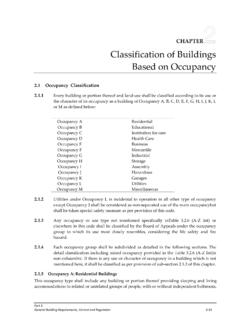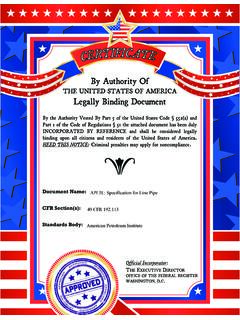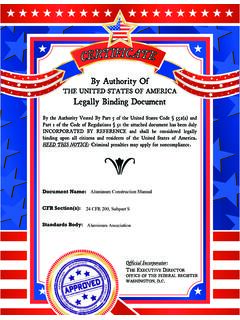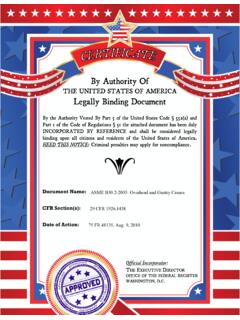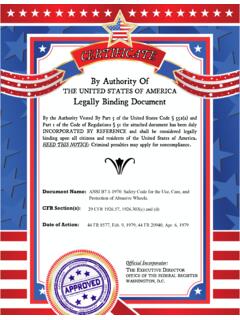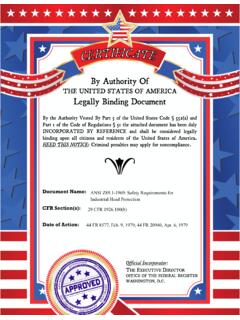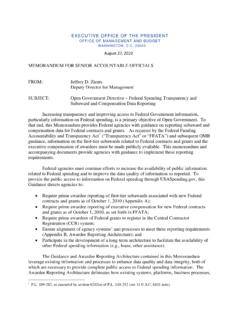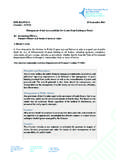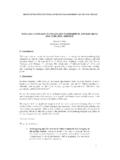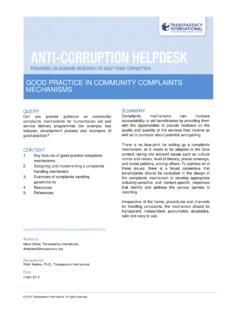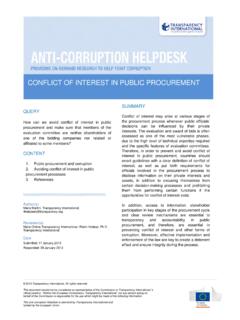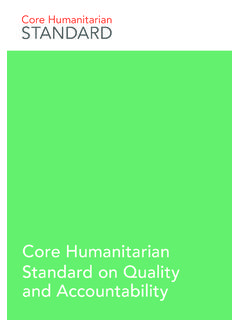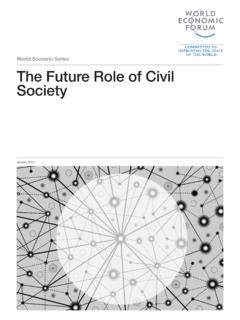Transcription of IS 2911-1-4 (2010): Code of practice for design and ...
1 Disclosure to Promote the Right To InformationWhereas the Parliament of India has set out to provide a practical regime of right to information for citizens to secure access to information under the control of public authorities, in order to promote transparency and accountability in the working of every public authority, and whereas the attached publication of the Bureau of Indian Standards is of particular interest to the public, particularly disadvantaged communities and those engaged in the pursuit of education and knowledge, the attached public safety standard is made available to promote the timely dissemination of this information in an accurate manner to the public.
2 ! $ ' + - Satyanarayan Gangaram Pitroda Invent a New India Using Knowledge 0 1 ' 5 Jawaharlal Nehru Step Out From the Old to the New 1 + , 1 + Mazdoor Kisan Shakti Sangathan The Right to Information, The Right to Live ! > 0 B Bhart hari N ti atakam Knowledge is such a treasure which cannot be stolen Invent a New India Using Knowledge IS 2911-1-4 (2010): Code of practice for design andconstruction of pile foundations, Part 1: Concrete piles,Section 4: Bored precast concrete piles [CED 43: Soil andFoundation Engineering]IS 2911 (Part 1/Sec 4) : 2010 Hkkjrh.
3 Ekudikby uhao dh fMtkbu vkSj jhfr lafgrkHkkx 1 da hV ikbyvuqHkkx 4 iwoZosf kr fNnzksa esa iwoZ<fyr da hV ikby(igyk iqujh{ )Indian StandardDESIGN AND CONSTRUCTION OF PILEFOUNDATIONS CODE OF PRACTICEPART 1 CONCRETE PILESS ection 4 Precast Concrete Piles in Prebored Holes( First Revision )ICS : BIS 2010B U R E A U O F I N D I A N S T A N D A R D SMANAK BHAVAN, 9 BAHADUR SHAH ZAFAR MARGNEW DELHI 110002 May 2011 Price Group 9 Soil and Foundation Engineering Sectional Committee, CED 43 FOREWORDThis Indian Standard (Part 1/Sec 4) (First Revision)}
4 Was adopted by the Bureau of Indian Standards, afterthe draft finalized by the Soil and Foundation Engineering Sectional Committee had been approved by theCivil Engineering Division find application in foundations to transfer loads from a structure to competent subsurface strata havingadequate load-bearing capacity. The load transfer mechanism from a pile to the surrounding ground iscomplicated and is not yet fully understood, although application of piled foundations is in practice overmany decades. Broadly, piles transfer axial loads either substantially by friction along its shaft and/or bythe end-bearing.
5 Piles are used where either of the above load transfer mechanism is possible dependingupon the subsoil stratification at a particular site. Construction of pile foundations require a careful choiceof piling system depending upon the subsoil conditions, the load characteristics of a structure and thelimitations of total settlement, differential settlement and any other special requirement of a project. Theinstallation of piles demands careful control on position, alignment and depth, and involve specialized skilland standard was originally published in 1964 and included provisions regarding driven cast in-situ piles,precast concrete piles, bored piles and under-reamed piles including load testing of piles.
6 Subsequently theportion pertaining to under-reamed pile foundations was deleted and now covered in IS 2911 (Part 3) : 1980 Code of practice for design and construction of pile foundations: Part 3 Under-reamed pile foundations(first revision) . At that time it was also decided that the provisions regarding other types of piles shouldalso be published separately for ease of reference and to take into account the recent developments in thisfield. Consequently this standard was revised in 1979 into three sections. Later, in 1984, a new section as(Part 1/Sec 4) was introduced in this part of the standard to cover the provisions of bored precast concretepiles.
7 The portion relating to load test on piles has been covered in a separate part, namely, IS 2911(Part 4) : 1984 Code of practice for design and construction of pile foundations: Part 4 Load test on piles .Accordingly IS 2911 has been published in four parts. The other parts of the standard are:Part 2 Timber pilesPart 3 Under-reamed pilesPart 4 Load test on pilesOther sections of Part 1 are:Section 1 Driven cast in-situ concrete pilesSection 2 Bored cast in-situ concrete pilesSection 3 Driven precast concrete pilesIt has now been felt that the provisions regarding the different types of piles should be further revised totake into account the recent developments in this field.
8 This revision has been brought out to incorporatethese the present revision following major modifications have been made:a) Definitions of various terms have been modified as per the prevailing engineering ) Procedures for calculation of bearing capacity, structural capacity, factor of safety, lateral loadcapacity, overloading, etc, have also been modified to bring them at par with the present ) design parameters with respect to adhesion factor, earth pressure coefficient, modulus of subgradereaction, etc, have been revised to make them consistence with the outcome of modern research andconstruction )
9 Minimum grade of concrete to be used in pile foundations has been revised to M 25. Minimum timeof curing before handling of precast piles has been modified.(Continued on third cover) Bored precast concrete pile is a pile constructed in a casting yard and subsequently lowered into preboredholes and the space grouted. These piles find wide applications where safety against chemical aggressivesubsoil and the ground water condition is needed. Such protection is possible with bored precast concretepiles, because these are made using vibrated dense, matured concrete, with low water cement ratio and arenot subjected to driving stresses.
10 These are also useful where artesian conditions exist or where localobstructions are encountered above the founding level or subsoil water flow exists. They also offer facilityfor applying protective coating on the pile recommendations for detailing for earthquake-resistant construction given in IS 13920 : 1993 Ductiledetailing of reinforced concrete structures subjected to seismic forces Code of practice should be takeninto consideration, where applicable (see also IS 4326 : 1993 Earthquake resistant design and constructionof buildings Code of practice ).The composition of the Committee responsible for the formulation of this standard is given in Annex the purpose of deciding whether a particular requirement of this standard is complied with, the finalvalue, observed or calculated, expressing the result of a test or analysis shall be rounded off in accordancewith IS 2 : 1960 Rules for rounding off numerical values (revised).
